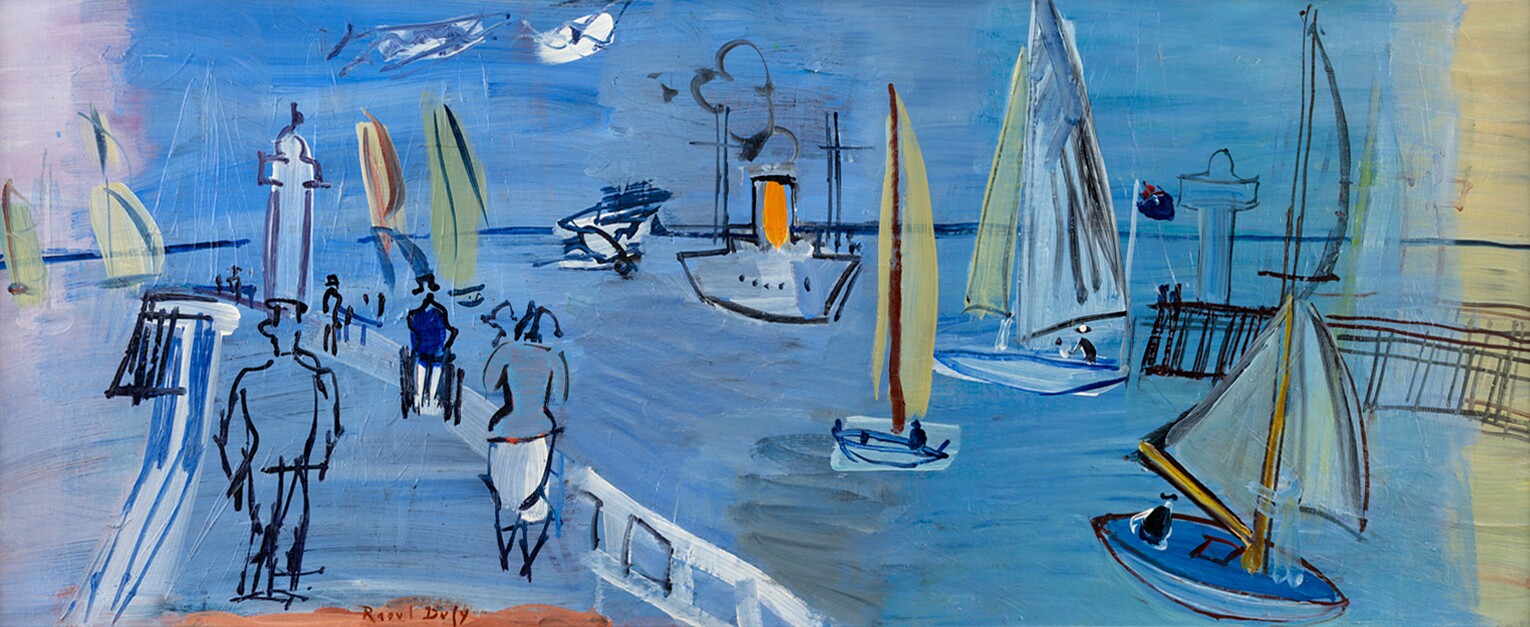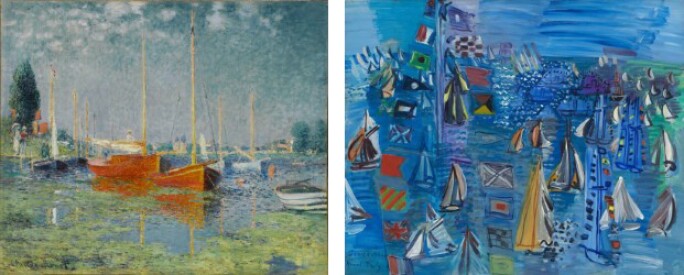Executed in 1935, Les Jetées aux voiliers exemplifies one of Raoul Dufy’s most enduring subjects: the harbour scene, rendered through his refined and distinctive visual language. Belonging to one of the artist’s most celebrated decade-long series, the present work sees Dufy return to the shores of Le Havre and Deauville, capturing the zestful atmosphere of regattas and seascapes in his iconic illustrative style. Through bold brushstrokes and fluid lines, radiant blues and translucent whites, Dufy transforms a familiar maritime setting into a shimmering evocation of modern leisure, infused with his characteristic joie de vivre.

The vibrant Fauvist hues in the present work, reminiscent of Henri Matisse and André Derain, can be traced back to Dufy’s initial encounter with their paintings at the 1905 Salon des Indépendants. This pivotal moment inspired Dufy to adopt their expressive palettes, leading him to infuse his own experience of light and perspective into his oeuvre. In particular, the blue—radiant, immersive, and wholly Dufy—serves as a chromatic anchor. As Jacky Lancaster wrote, “Of all the imagery suggested by the mere mention of his name, perhaps blue is most nearly synonymous with Raoul Dufy” (Jacky Lancaster, Raoul Dufy, Washington, 1983, p. 5).
“Blue is the only colour which maintains its own character in all its tones…it will always stay blue…whereas yellow is blackened in its shades, and fades away when lightened; red when darkened becomes brown, and diluted with white is not longer red, but another colour—pink.”
While seascapes and regattas had long featured in Impressionist and Post-Impressionist painting—from Monet’s Argenteuil to Signac’s Saint-Tropez—Dufy approached the subject with a distinctly modern sensibility. His interest lay not in capturing transient moments, but in the orchestration of line, colour, and rhythm. As Perez-Tibi observes, he would “sacrifice detail in order to convey the general impression” through a structure animated by “increasingly free and dynamic composition” (Dora Perez-Tibi, Dufy, New York, 1989, p. 158). Executed in luminous washes and expressive outlines, Les Jetées aux voiliers reflects Dufy’s theory of couleur-lumière, where light is not imitated but distributed across the surface.

Right: FIG. 2, RAOUL DUFY, REGATTA AT COWES, 1934. NATIONAL GALLERY OF ART, WASHINGTON DC
Les Jetées aux voiliers stands as a vibrant synthesis of Dufy’s formal innovation and enduring love for the sea. Through fluid line, luminous colour, and rhythmic composition, he reimagines the harbour not as a literal view, but as an atmosphere. Rooted in observation yet liberated from naturalism, the work encapsulates Dufy’s singular ability to celebrate the visual world—rendering not its exact appearance, but its atmosphere, cadence, and joy.